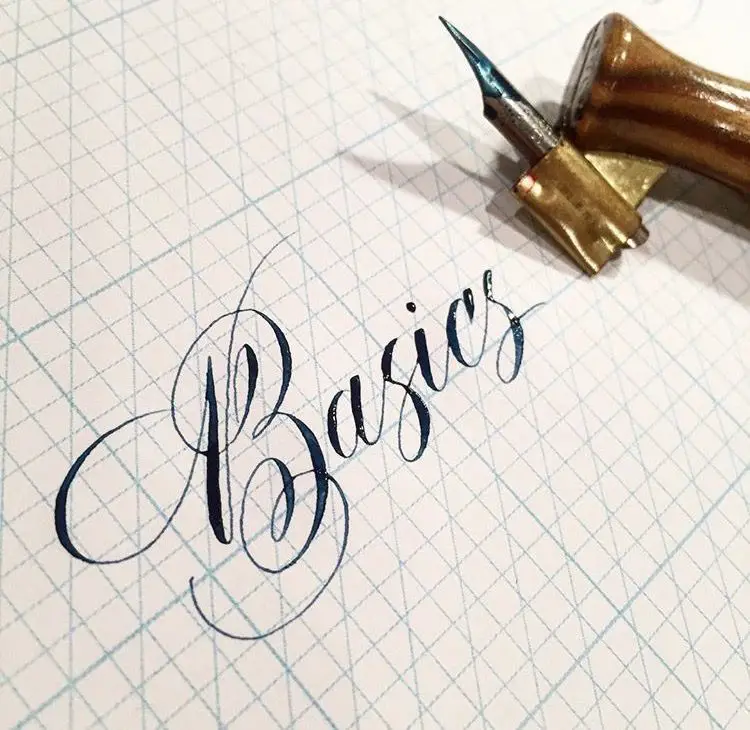The skill of writing beautiful words is known as calligraphy. It is considered an art form because learning requires skills and perseverance.
You can practice Calligraphy with either a brush or a pen, depending on which you prefer. Colors and glitters can also be added to make the display more appealing. All you have to do is learn to play light with thick and thin strokes all the time. It’s also a lot of fun to see. People frequently confuse calligraphy with cursive writing, although the two are not the same.
Calligraphy types
Pointed pen

A pointed pen nib is used to learn this form of Calligraphy. It is also available with a different nib in a different holder. The Pointed Pen calligraphy style is useful for creating delicate hairlines and strong strokes. It’s both entertaining and therapeutic. Furthermore, this calligraphic style is adaptable and lively. As a result, it is possible to practice writing on rough and bad covers. It strengthens its foundation by mastering the fundamentals.
Broad edge

To practice for Broad Edge, use flat tip nibs. For a narrow line, keep the pen at a 0 degree angle. In addition, you can draw a line. Heading down at the very same angle results in a thick line. This calligraphy style encompasses all thick and bold writing styles such as Gothic Scripts, Blackletter, Italic, and Uncial.
Faux

Faux Calligraphy can be done with a variety of writing tools, including chalk, marker, and even a ballpoint pen. Writing the words in cursive or copying calligraphic style is an example of faux style. It’s also known as faux calligraphic style. It’s easy to learn and enjoyable to practice. The magic is also created by sharpening and increasing the thickness of the downward stroke.
Brush Pen

Brush Pen Calligraphy can be done with a Calligraphic pen or marker that has a flexible tip that is long tapered and has a consistent ink flow. Because it only needs paper and pen, this calligraphic technique is quite inexpensive.
If you really want a soft stroke, don’t use too much effort on the pen while reaching upward. Nevertheless, for a wide stroke, while moving downwards, you must apply some force to the pen.
Western
Western calligraphy originated in the 10th century and is widely used in the western hemisphere of the world.
Eastern
Eastern Calligraphy dominates the eastern hemisphere, including China, Japan, and Korea. Calligraphers were honored since it is highly valued in Asian countries. Nobles and officials mastered the ways to advance in rank. Manuscripts in eastern calligraphy are shorter than those in western calligraphy.
Islamic

Its writings and practices are engraved in Arabic script. As a result, it is applicable to dip pens and broad nib pens. This style has impacted Islamic calligraphic styles in India, the Ottoman Empire, Persian, the Arab world, Afghanistan, and Pakistan. It is mostly employed for religious purposes, such as writing on a mosque or in holy books. The Ottoman era was the pinnacle of the development of Islamic calligraphy.
The history
As humans learned to convey their feelings through gestures, writing evolved into a visual method for communicating their ideas. Previously, people have written with any sharp or pointed, such as a rock or a twig. Calligraphy, which began in China during the Shang Dynasty, acquired popularity throughout the Han Dynasty.
Around time, several writing styles were discovered all over the globe. Some Calligraphy fonts available on the digital platform are influenced by Roman, Chinese, Italic, Greek, and Indic scripts. It is now popular all around the world. It first gained popularity in China, then spread to portions of Japan, India, Tibet, and Europe.
It was discovered on the edges of jades in pictograms and ideographs in East Asian countries such as China, Japan, Vietnam, and Korea. Calligraphy appears to be roughly 3,000 years old, having begun to print holy texts in Europe and India. It was only discovered in Europe in the 15th century.
However, since then, Calligraphy has been practiced in specific musical scores, cards, and written books. Its practice today is divided into two types: modern and traditional.
Copperplate, Spencerian, Italic, Blackletter, and other modern calligraphic styles do not adhere to established standards. However, in Traditional Calligraphic forms, you are expected to follow the norms. Letters in classic style have a defined height, angle, thickness, and strokes. All of these constraints do not apply to modern style. You can easily experiment and add your own original artwork.
